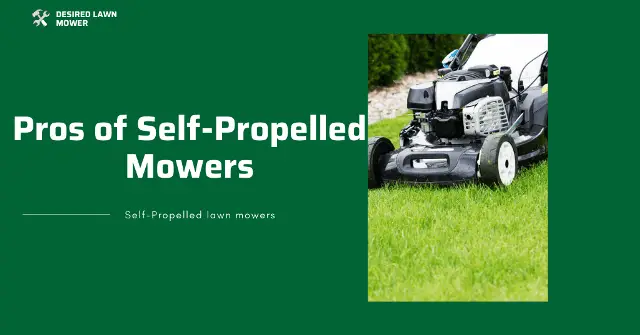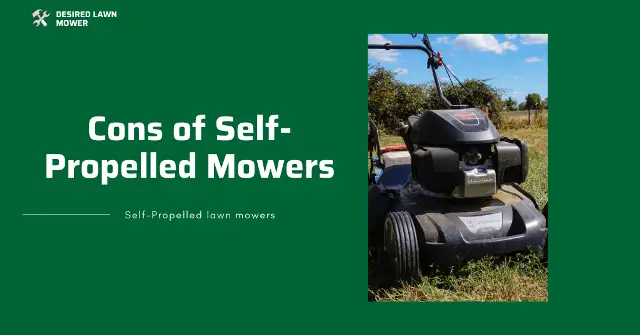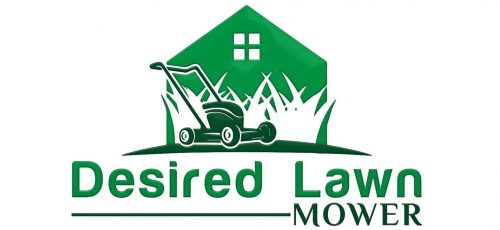Does your back hurt from long hours of pushing your push mower? self-propelled mowers are probably what you need.
Walk-behind mowers are classified into two types: self-propelled mowers and traditional push mowers. In this article, I’m going to share all the nitty-gritty about self-propelled mowers. That includes the definition, how this machine works, its pros, cons, and more.
What is a Self-propelled Mower
A self-propelled mower is a type of walk-behind mower, but unlike conventional mowers, it contains a motor system that pushes the lawnmower forward.
However, this doesn’t mean that the lawnmower is robotic. As a landscaper, you still have a part to play. You’ll need to guide the lawnmower in the direction you want to mow. But thanks to the motor system, self-propelled lawnmowers are fast, less tiring, and will give a smooth and clean cut.
How a Self-propelled Lawn Mower Works
A self-propelled lawnmower works is similar to a vehicle. It contains a drive shaft that connects the wheels to a system of motors. When you turn on the mower, the engine provides power to turn the motors. The motors spin the wheels, moving your machine forward.
The motor is only connected to two wheels, but some high-end options have a powerful four-wheel drive. Plus, in most lawnmowers, you’ll need to pull a cord to start the engine. However, there are now modern electric start options which you can start with a simple press of a button.
Operating a self-propelled mower is not complicated. Each machine comes with a hand lever known as a bail bar. When you squeeze the bail bar, the mower’s cutting blades and system start automatically. Yours is to guide the machine in the right direction.
The bar lever is highly responsive and will stop and start the wheels instantly, as needed, during operation. Simply squeeze the bar to activate the self-propulsion feature and release it to stop. When you release the bar, the cutting blades will also stop automatically as a safety measure against fatal accidents.
Some high-end self-propelled lawnmowers have a unique feature known as a blade override system. Releasing the bar lever only stops the cutting blades without necessarily shutting down your mower.
This feature comes in very handy when you have to clear obstacles along the mower’s path. It will also allow you to transport your machine without mowing.
Do I Need a Self-propelled Mower?
A self-propelled mower is quick and efficient and will work well in both slopy and flat yards. It is designed to move without requiring extra push force from the operator. These features make it ideal for anyone who wants to complete the mowing job quickly.
It is also ideal for senior citizens and other users whose health may not allow them to do the heavy work of pushing a push lawnmower. Click here to learn more.
Types of Self-propelled Mower
Self-propelled lawn mowers are divided into three main types, front, rear, and all-wheel.
- Front wheels
Front-wheel self-propelled mowers are easy to start and are ideal for flat terrains. They are the least costly of all three types.
- Rear wheels
These are ideal for large lawns of one to three acres. They offer the best traction, making them excellent on slopes. Plus, rear-wheel self-propelled mowers require the least amount of push to guide them, making them perfect for seniors.
- All-wheels
The motor in an all-wheels self-propelled mower is connected to all four wheels, making them ideal for use on rough terrains. They are also quick to start and do not require a lot of physical effort to guide in the right direction.
Gas-powered vs Electric-Powered Self-propelled Mowers
Self-propelled lawnmowers are either powered by gas or electricity. Electric-powered lawnmowers are either corded or not, and their operation is super-quiet. A corded mower must be connected to a power source. That limits you to mowing in areas close to a power outlet. Plus, you can only trim as far as the cord reaches.
The other form of electric-powered mowers is battery-powered. These contain a battery that is powerful enough to propel the mower forward. However, most of them do not hold enough charge to drive your mower for a large area.
On the other hand, gas-powered mowers rely on fuel to propel themselves. Each model will have a different fuel capacity. Ideally, choose a mower with the largest fuel tank possible. They’ll operate for more extended periods before they need refilling.
Are Self-propelled Lawn Mowers Good on Slopes?
One of the most common concerns that every landscaper has when buying a lawnmower is whether that particular mower type is ideal for their yard’s terrain. Luckily, self-propelled mowers are some of the most versatile types out there.
A self-propelled mower works well on areas with slopes of up to 30 degrees. They are also stable and will offer excellent traction. However, if your yard is mostly hilly, you’d want to buy a mower with a powerful engine that will effortlessly handle hills.
Advantages of Using a Self-Propelled Mower

- Saves you time
A self-propelled mower is designed to automatically move forward along your mowing rows. The engine does all the work, and your role is to guide it. That makes it quicker than push mowers and also less tiring.
- Works well on slopes
When mowing with walk-behind mowers on slopes, you’ll need to use much more energy, which is not only time-consuming but also exhausting. With a self-propelled lawnmower, mowing on slopes is a breeze. You’ll only need to choose a mower whose engine is powerful enough to cut uphill.
And thanks to their relatively small size, self-propelled mowers are stable even on uneven terrain.
- You’re in charge of your speed
Self-propelled mowers are available in two options. They may either have a variable or constant speed. Variable speeds mean you can choose your preferred mowing speed, which can come in handy, especially when mowing on tight lawns. Some self-propelled mower speed adjusts to your walking pace automatically during operation.
- It gives more even cuts
A push mower’s speed depends on the operator’s walking speed, which of course, keeps on varying. Self-propelled mowers, on the other hand, move at a constant rate. That means that the cutting rate is also consistent, resulting in a more even and smooth cut.
Disadvantages of Using a Self-Propelled Mower

- Difficult to maneuver around obstacles
Self-propelled mowers are designed to propel forward automatically. Thus, when you’re maneuvering around obstacles, you’ll need to fight against the automatic drive of the mower’s wheel, which is both tiring and time-consuming.
- Difficult to move from one place to another
Most self-propelled mowers are designed to move forward as soon as you turn them on. The cutting blades will also begin to turn simultaneously when the mower is moving. That makes it challenging to move from point A to B without cutting grass.
- Costly
Self-propelled mowers are usually more expensive than other types of walk-behind mowers. See “Best self-propelled mowers under $300“ for more information about budget mowers.
The Bottom Line
Self-propelled mowers are quick and easy to use. They are suitable for use in medium to large-sized lawns and will mow effortlessly on slopes and tight spaces. Plus, because they require little physical effort to use, self-propelled mowers are also ideal for use by older adults.
